#Friedrich Wilhelm IV.
Text
Ein Wehrdienstverweigerer vor 222 Jahren
Vor den Toren Berlins wurde dem Charlottenburger Bürgermeister Otto Ferdinand Sydow und dessen Ehefrau Karoline Sophie Henriette geb. Müncheberg am 23. November 1800 ein Sohn geboren und in der Berliner Nikolaikirche getauft. Als Geburtsort ist nicht Charlottenburg, sondern Berlin angegeben, weil die Mutter – obwohl sehr königstreu und voller Verehrung für Königin Luise – ihre fünf Knaben in…
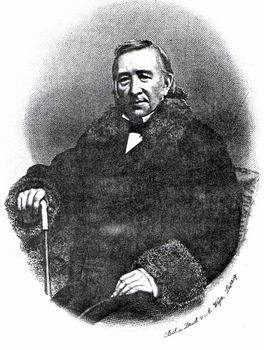
Auf WordPress ansehen
0 notes
Text

Monument of Friedrich Wilhelm IV in the Tiergarten Park of Berlin, Germany
German vintage postcard
#historic#tiergarten#photo#briefkaart#vintage#berlin#monument#friedrich wilhelm iv#friedrich#sepia#iv#photography#wilhelm#the tiergarten park#carte postale#postcard#postkarte#postal#tarjeta#ansichtskarte#old#ephemera#postkaart#park#german#germany
8 notes
·
View notes
Text
Round 2: Georg Friedrich vs Friedrich Wilhelm IV


Georg Friedrich (r. 1543-1603)
Margrave of Brandenburg-Ansbach, Regent of Prussia
Georg Friedrich's regency in place of Albrecht Friedrich was by all definitions a successful one. Adept at administration, he reformed the bureaucracy and currency of many of the regions he ruled. His reign was generally peaceful and stable, in contrast to Austria many of his neighbors at the time.
As today is the birthday of our greatest monarch, Friedrich der Große, we must mention that conflicts over the providence of Jägerndorf laid the groundwork for the First Silesian War and the rise of our beloved king. We must wholeheartedly commend him for standing up to the Austrian scourge and allowing one of our most important territories to remain Prussian.
Friedrich Wilhelm IV (r. 1840-1861)
The Erfurt Union was the Prussian response to the Deutsche Bund, unifying many of the north German states. The alliance between Prussia, Saxony, and Hanover was key. While it was ultimately unsuccessful, it laid the groundwork for the later North German Confederation under his sucessor.
Despite his previous hesitations, Friedrich Wilhelm IV did concede to the liberal revolutions and allow for Prussia's first ever constitution. Despite the creation of the Landtag and the allowance for universal male sufferage, the power afforded to the monarch preserved Prussia's conservative governmental traditions.
We here at the Kreuzzeitung must pay a special tribute to Friedrich Wilhelm IV. After the Revolutions of 1848, he assembled a group of conservative noblemen to help combat any further revolutionary fervor. It was that group that founded this esteemed paper, so for that, we thank him.
3 notes
·
View notes
Video
Eiszeit by Pascal Volk
Via Flickr:
Möglicherweise gibt es da gutes Eis.
#Berlin#Berlin Tempelhof-Schöneberg#Europe#Friedrich-Wilhelm-Straße#Germany#Tempelhof#Menschen#People#Leute#anstehen#lined up#Spring#Frühling#Primavera#Canon EOS 5D Mark IV#5DMkIV#SIGMA 50mm F1.4 DG HSM | Art#50mm f1.4#50mmlens#unpointquatre#onepointfour#nifty fifty#50mm#DxO PhotoLab#flickr
1 note
·
View note
Video
instagram
Some Prussian Glory to gild your Weekend :)
Statue of King Friedrich Wilhelm IV in front of the Orangerie Palace, Potsdam
#Orangerie Schloss#Orangerie Palace#Potsdam#Brandenburg#Germany#Deutschland#Friedrich IV#König Friedrich IV#King Friedrich Wilhelm IV#Prussia#Preussen
0 notes
Text


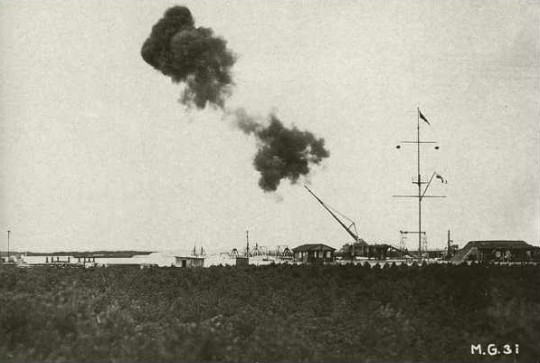
The Paris Gun
The Krupp arms-making dynasty was founded in Essen upon the fortune amassed by Arndt Krupp, who settled in that city in 1587. His son Anton expanded the family’s endeavors into making firearms during the Thirty Years’ War of 1618-1648, and the family progressively expanded its operations over the ensuing decades. In 1811, Friedrich Krupp (1787-1826) established a steel casting facility, and, although he successfully began casting steel in 1816, he expended considerable funds in the process. His son, Alfried (1812- 1887), continued his father’s work and eventually re-established the family fortune. By its nature steel was very difficult to cast, and internal faults were often impossible to detect through existing testing procedures. Defective cast steel pieces were also much more dangerous to crews than iron cannons, as the softer iron tended to split or burst with less energy than the harder steel, which more often ruptured with deadly violence. The Krupp firm’s success in casting steel was considered one of the major metallurgical achievements of its day.
Beginning in 1844, Alfried Krupp began experimenting in machining guns from solid cast steel blanks and in 1847 produced his first steel cannon. That same year he presented a steel gun to the King of Prussia, Frederick Wilhelm IV (1795-1861)-an act of entrepreneurial generosity that later won an order for 300 field guns. He went on to display a 6-pounder muzzleloading gun at the Great Exhibition of 1851 and began experiments in developing breechloading weapons. In 1856, Krupp introduced a 90mm field gun fitted with a transverse sliding breechblock that fit through a corresponding slot in the rear of the barrel.
Germany subsequently made the transition to rifled breechloaders during the 1860s, a move that gave it a distinct artillery advantage during the 1870-1871 Franco-Prussian War. Shortly after the war it adopted 78.5mm guns for its horse artillery and 88mm pieces for field use. The logistical difficulties associated with supplying two sizes of ammunition in the field and recent advances in metallurgy and gun design then led to the Model 73/88 system, which used the 88mm caliber for both horse artillery and field use and the later Model 73/91 system, utilizing nickel steel barrels. The Model 73/91 was finally superseded by Germany’s answer to the French 75-the Model 96 or Feldkanone 96 neur Art.
The development of specialized antiaircraft artillery also intensified during the war. The first documented use of antiaircraft artillery occurred as early as the siege of Paris during the Franco-Prussian War in 1870. At Paris, the Prussian commander von Moltke ordered weapons from Krupp in order to shoot down balloons in which the French were trying to sail over the Prussian lines. Krupp eventually delivered a number of single-shot, caliber 1-inch rifles that were mounted on pedestals bolted to the beds of two-horse wagons; they theoretically could follow the balloons on the ground while maintaining a steady firing rate. The Krupp pieces were relatively ineffective, yet at least one French balloon was apparently downed by their fire.
The rapid proliferation of powered military aircraft at the turn of the century, however, spurred an equally dedicated effort to neutralize the threat of air attacks. During the 1909 Frankfurt International Exhibition, Krupp unveiled three antiaircraft guns in a bid to monopolize the emerging market. These included a caliber 65mm 9-pounder and a 75mm 12-pounder. Krupp claimed that the largest, a pedestal-mounted 105mm gun intended for shipboard use, achieved a maximum ceiling of 37,730 feet. The caliber 65mm gun had an 18,700-foot range, could elevate 75 degrees, and its carriage had unique hinged axles that allowed the wheels to be pivoted to a position perpendicular to their traveling position. With the trail spade acting as its axis, this arrangement enabled the crew to traverse the piece 360 degrees to track enemy aircraft. With a claimed maximum ceiling of 21,326 feet, the caliber 75mm gun was mounted on a truck bed, thus giving it a high degree of mobility. Not to be outdone, Erhardt, Krupp’s closest domestic competitor, also exhibited a 50mm quick-firing antiaircraft gun mounted in an armored car’s turret.
The period also witnessed considerable experimentation in antiaircraft shells and fuses. Krupp introduced a high-explosive shell for its 3-pounder equipped with a “smoke-trail” fuse, an early tracer round that both aided the crews in sighting and was an effective incendiary against the hydrogen-filled airships of the period.
During World War I the Germans continued to experiment in antiaircraft weaponry, beginning in 1914 with the 77mm Ballonen-AK. The Ballonen-AK was then, in turn, followed in 1915 by the 77mm Luftkanone, a basic 77mm field cannon barrel mounted on a rotating scaffolding. The more effective Krupp 88mm FlaK entered service in 1918 and eventually became the inspiration for the famous World War II German “Eighty-Eight.”
Popularly named after Alfred Krupp’s daughter, the 41.3-ton, 420mm “Big Bertha” had a horizontal sliding block and fired a 1,719-pound shell up to 10,253 yards. Big Bertha required five tractors to transport its components, and it had to be assembled on site. In conjunction with a number of Austrian Skoda 305mm howitzers, the L/14 was first used with devastating effect against Liege in August 1914; it saw other action on both the Western and Eastern fronts. Owing to its relatively short range and vulnerability to Allied fire, Big Bertha was obsolete by 1917. Another heavy piece, the 211mm Mörser was adopted in 1916. It weighed 14,727 pounds and fired a 250-pound shell up to 12,139 yards.
Designed by Krupp engineers and adopted in 1918, the Paris Gun used the basic 380mm Max railroad gun barrel fitted with a barrel liner and lengthened 20 feet. The 210mm Paris Gun weighed 1,653,470 pounds and mounted a 2,550-inch barrel with a horizontal sliding block. It fired a 264-pound shell up to 82 miles. Crewed by naval personnel, the Paris Gun was so powerful that it fired its shells into the stratosphere, where the thinner atmosphere exerted less resistance, allowing such long ranges. The stress on the bore, however, wore the barrel significantly, and each succeeding projectile had to have progressively larger driving bands and heavier powder charges to compensate for the increasing windage. Although hugely inefficient in the final analysis, the Paris Gun’s greatest value lay in its use as a propaganda tool rather than an artillery piece.
Source
26 notes
·
View notes
Text
Friends, enemies, comrades, Jacobins, Monarchist, Bonapartists, gather round. We have an important announcement:
The continent is beset with war. A tenacious general from Corsica has ignited conflict from Madrid to Moscow and made ancient dynasties tremble. Depending on your particular political leanings, this is either the triumph of a great man out of the chaos of The Terror, a betrayal of the values of the French Revolution, or the rule of the greatest upstart tyrant since Caesar.
But, our grand tournament is here to ask the most important question: Now that the flower of European nobility is arrayed on the battlefield in the sexiest uniforms that European history has yet produced (or indeed, may ever produce), who is the most fuckable?
The bracket is here: full bracket and just quadrant I
Want to nominate someone from the Western Hemisphere who was involved in the ever so sexy dismantling of the Spanish empire? (or the Portuguese or French American colonies as well) You can do it here
The People have created this list of nominees:
France:
Jean Lannes
Josephine de Beauharnais
Thérésa Tallien
Jean-Andoche Junot
Joseph Fouché
Charles Maurice de Talleyrand
Joachim Murat
Michel Ney
Jean-Baptiste Bernadotte (Charles XIV of Sweden)
Louis-Francois Lejeune
Pierre Jacques Étienne Cambrinne
Napoleon I
Marshal Louis-Gabriel Suchet
Jacques de Trobriand
Jean de dieu soult.
François-Étienne-Christophe Kellermann
17.Louis Davout
Pauline Bonaparte, Duchess of Guastalla
Eugène de Beauharnais
Jean-Baptiste Bessières
Antoine-Jean Gros
Jérôme Bonaparte
Andrea Masséna
Antoine Charles Louis de Lasalle
Germaine de Staël
Thomas-Alexandre Dumas
René de Traviere (The Purple Mask)
Claude Victor Perrin
Laurent de Gouvion Saint-Cyr
François Joseph Lefebvre
Major Andre Cotard (Hornblower Series)
Edouard Mortier
Hippolyte Charles
Nicolas Charles Oudinot
Emmanuel de Grouchy
Pierre-Charles Villeneuve
Géraud Duroc
Georges Pontmercy (Les Mis)
Auguste Frédéric Louis Viesse de Marmont
Juliette Récamier
Bon-Adrien Jeannot de Moncey
Louis-Alexandre Berthier
Étienne Jacques-Joseph-Alexandre Macdonald
Jean-Mathieu-Philibert Sérurier
Catherine Dominique de Pérignon
Guillaume Marie-Anne Brune
Jean-Baptiste Jourdan
Charles-Pierre Augereau
Auguste François-Marie de Colbert-Chabanais
England:
Richard Sharpe (The Sharpe Series)
Tom Pullings (Master and Commander)
Arthur Wellesley, 1st Duke of Wellington
Jonathan Strange (Jonathan Strange & Mr. Norrell)
Captain Jack Aubrey (Aubrey/Maturin books)
Horatio Hornblower (the Hornblower Books)
William Laurence (The Temeraire Series)
Henry Paget, 1st Marquess of Anglesey
Beau Brummell
Emma, Lady Hamilton
Benjamin Bathurst
Horatio Nelson
Admiral Edward Pellew
Sir Philip Bowes Vere Broke
Sidney Smith
Percy Smythe, 6th Viscount Strangford
George IV
Capt. Anthony Trumbull (The Pride and the Passion)
Barbara Childe (An Infamous Army)
Doctor Maturin (Aubrey/Maturin books)
William Pitt the Younger
Robert Stewart, 2nd Marquess of Londonderry (Lord Castlereagh)
George Canning
Scotland:
Thomas Cochrane
Colquhoun Grant
Ireland:
Arthur O'Connor
Thomas Russell
Robert Emmet
Austria:
Klemens von Metternich
Friedrich Bianchi, Duke of Casalanza
Franz I/II
Archduke Karl
Marie Louise
Franz Grillparzer
Wilhelmine von Biron
Poland:
Wincenty Krasiński
Józef Antoni Poniatowski
Józef Zajączek
Maria Walewska
Władysław Franciszek Jabłonowski
Adam Jerzy Czartoryski
Antoni Amilkar Kosiński
Zofia Czartoryska-Zamoyska
Stanislaw Kurcyusz
Russia:
Alexander I Pavlovich
Alexander Andreevich Durov
Prince Andrei (War and Peace)
Pyotr Bagration
Mikhail Miloradovich
Levin August von Bennigsen
Pavel Stroganov
Empress Elizabeth Alexeievna
Karl Wilhelm von Toll
Dmitri Kuruta
Alexander Alexeevich Tuchkov
Barclay de Tolly
Fyodor Grigorevich Gogel
Ekaterina Pavlovna Bagration
Ippolit Kuragin (War and Peace)
Prussia:
Louise von Mecklenburg-Strelitz
Gebard von Blücher
Carl von Clausewitz
Frederick William III
Gerhard von Scharnhorst
Louis Ferdinand of Prussia
Friederike of Mecklenburg-Strelitz
Alexander von Humboldt
Dorothea von Biron
The Netherlands:
Ida St Elme
Wiliam, Prince of Orange
The Papal States:
Pius VII
Portugal:
João Severiano Maciel da Costa
Spain:
Juan Martín Díez
José de Palafox
Inês Bilbatua (Goya's Ghosts)
Haiti:
Alexandre Pétion
Sardinia:
Vittorio Emanuele I
Lombardy:
Alessandro Manzoni
Denmark:
Frederik VI
Sweden:
Gustav IV Adolph
49 notes
·
View notes
Text
THIS DAY IN GAY HISTORY
based on: The White Crane Institute's 'Gay Wisdom', Gay Birthdays, Gay For Today, Famous GLBT, glbt-Gay Encylopedia, Today in Gay History, Wikipedia, and more … May 21



1857 – Count Albrecht Friedrich Wilhelm Bernhard of Hohenau, born in the Albrechtsberg Castle in Dresden (d.1914) was a German nobleman.
Friedrich, also known as Fritz, was a son of Prince Albrecht of Prussia, who was a brother of Emperor William I and King Frederick William IV of Prussia, from his second, morganatic marriage with Rosalie, daughter of the Prussian War Minister Gustav von Rauch. Because his father's marriage to his mother was morganatic, Friedrich was not counted as a member of the House of Hohenzollern.
After the death of his mother, Friedrich was, together with his older brother, William, heir to the Schloss Albrechtsberg in Dresden, which he occupied until his death. In 1901, together with Friedrich Botho, a brother of Philip, Prince of Eulenburg, he had to leave the Prussian military service because of his homosexual inclinations.
Friedrich was also involved in the two biggest scandals of the German Empire under Kaiser Wilhelm II. He belonged to the Liebenberg Round Table – a circle of homosexual associates of the Kaiser – and played a role alongside his wife in the so-called Kotze Affair – a series of anonymous letters full of obscene accusations sent to prominent Gremans.

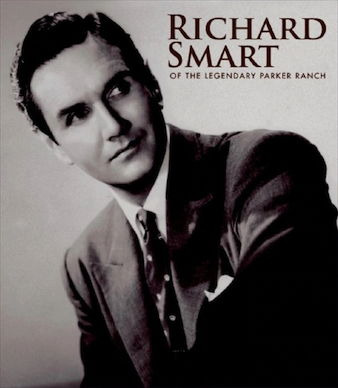
1913 – Richard Smart (d.1992) was a musical theatre actor and singer who became owner of the largest private ranch in Hawaii.
Richard Palmer Kaleioku Smart was born in Honolulu. In 1914 the family traveled to Europe, where his mother gave birth to a sister Elizabeth Ella Smart in Paris. By this time World War I was starting, so they hurriedly traveled back to New York City, where the sister died. His mother died shortly after this from tuberculosis. A year later, his father Henry Gaillard Smart (son of a Virginia clergyman) died. He was raised by his part-Hawaiian maternal grandmother, born Elizabeth Jane Lanakila Dowsett, usually called "Aunt Tootsie" in San Francisco. Smart was sent to Los Gatos High School and become interested in theater.
Although he had many cousins, he became the sole owner of the Parker Ranch on Hawaiʻi Island, founded by his 5th generation ancestor John Palmer Parker (1790–1868). The ranch was managed by Alfred Wellington Carter. Already one of the largest owned by a single person (the King Ranch was owned by a corporation), the Carters expanded the operation further through the 20th century. The ranch had over 500,000 acres (200,000 ha) of land and 30,000 head of Hereford cattle.
Smart became a nightclub singer and performed in plays and musicals from 1933–1939. Director Joshua Logan hired him for the Broadway theatre production of Two for the Show in 1940, and he performed in The Merry Widow. Smart married actress Patricia Monteagle who appeared un-credited in the 1936 movie The Great Ziegfeld, but was more well known as a socialite. The family moved to Honolulu later in 1940, but then lived in California after the Attack on Pearl Harbor. About 40,000 acres (16,000 ha) of the ranch were leased to the United States Marines for use as Camp Tarawa.
He was divorced in 1944.
After the war he appeared under the name Dick Smart. In 1946 and 1947, he starred in the Broadway production of Bloomer Girl with Nanette Fabray and All for Love in 1949. Over nearly 30 years, Smart performed on Broadway and in cabarets in the U.S. and abroad. He headlined such clubs as the Coconut Grove in Los Angeles, the Monte Carlo in New York and Le Lido in Paris. After A.W. Carter died in 1949, Smart took a more active role in the ranch.Despite having married and fathered two children, there is reason to believe Smart was homosexual or at least bisexual. His marriage ended in a divorce in 1944 and he never remarried. George W. Parker III, wrote he learned Smart was gay via a mutual acquaintance, who told him "Smart was gay" at least while she knew him when he was living on the French Riviera. A Hawaii Island resident wrote "Smart who died in the last few years was gay. He was very progressive and did wonders for the Big Island helping the poor folks out some." On this same forum in reply another Hawaii resident in September 2009 wrote "I knew Richard Smart was gay."


1917 – Today is the birthday in New Westminster, British Columbia of Raymond Burr, Canadin-American actor best known for his "Perry Mason" lawyer roles. (d.1993) Early in his career Burr invented fictional wives and a son (and in some cases their fictional deaths) to throw reporters off the scent of his real life. Fortunately for Burr, he found some peace towards the end of his life with his longtime companion Robert Benevides (b. 1930), who was Burr's "long-time companion" for 30 years until the actor's death.

Raymond Burr and Robert Benvenides
Burr met Benevides, a young actor and Korean War veteran on the set of Perry Mason in the mid 1950s, . According to Benevides they became a couple about 1960 and he gave up acting in 1963 and later became a production consultant for 21 of the Perry Mason TV movies. Together they owned and operated an orchid business and then a vineyard, in the Dry Creek Valley. He said he was Burr's partner until Burr's death in 1993. Burr left Benevides his entire estate, including "all my jewelry, clothing, books, works of art,...and other items of a personal nature." Benevides remains the proprietor of the vineyard they created together in Healdsburg, California.
Later accounts of Burr's life explain he hid his sexuality to protect his career. In 2000, AP reporter Bob Thomas recalled the situation:
It was an open secret...that he was gay. He had a companion who was with him all the time. That was a time in Hollywood history when homosexuality was not countenanced. Ray was not a romantic star by any means, but he was a very popular figure...if it was revealed at that time in Hollywood history [that he was gay] it would have been very difficult for him to continue.
Art Marks, a producer of Perry Mason, recalled Burr's talk of wives and children: "I know he was just putting on a show....That was my gut feeling. I think the wives and the loving women, the Natalie Wood thing, were a bit of a cover."
In 2006, Dean Hargrove, who worked on Perry Mason Returns, said:
"I had always assumed that Raymond was gay, because he had a relationship with Robert Benevides for a very long time. Whether or not he had relationships with women, I had no idea. I did know that I had trouble keeping track of whether he was married or not in these stories. Raymond had the ability to mythologize himself, to some extent, and some of his stories about his past...tended to grow as time went by."
A 2007 memoir by actor Paul Picerni described several experiences with Burr about 1951 on the set of A Place in the Sun, when he felt Burr expressed sexual interest in him. He wrote:
"I saw him staring at me. With his big blue eyes. And with this strange expression on his face. For the first time in my life, I felt like a DAME. Then it hit me: He'd been giving me all this bullshit about his wife and his two kids in London, when in fact he was gay, and he was makin' a move on me!" [Burr] "was a great guy and very subtle in his homosexuality."
Burr had many hobbies over the course of his life: cultivating orchids, collecting wine, art, stamps, and seashells. He was interested in cooking, flying, sailing, and fishing. He donated most of his money to charities and friends. According to A&E Biography, Burr was also an avid reader with a retentive memory. In addition, he taught acting classes at Columbia University. He was also among the earliest importers and breeders of Portuguese Water Dogs in the United States. Burr was devoted to his favorite hobby, cultivating and hybridizing orchids.
He, Michael J. Fox and Jim Carrey head list of top Canadians in U.S. television compiled by Banff Television Festival, June 2002. In 2008 he was among four Canadians commemorated on stamps of Canada. (The other 3 were Norma Shearer, Marie Dressler and Chief Dan George.) Before dying from cancer, he threw some grand parties to say farewell to many of his friends. After dying of cancer, he was interred at Fraser Cemetery, New Westminister, British Columbia, Canada.

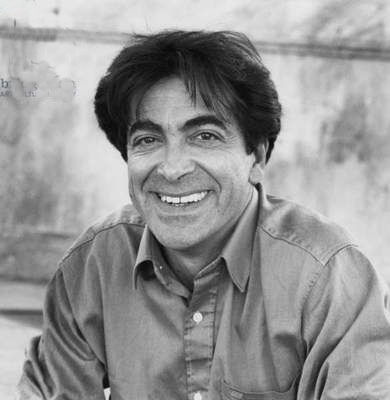
1948 – French author Patrick Drevet has earned distinction for his vividly sensual and at times unsettling depictions of the natural world, individual subjectivity, and homosexual attraction.
He was born in Saint-Etienne, France; son of Antoine a lumber salesman and Marie, a secretary.
Regarded as an accomplished literary stylist, Drevet's meticulously descriptive prose has been compared to that of s Alain Robbe-Grillet, while his focus on homosexual longing has elicited comparison to the works of Marcel Proust, Arthur Rimbaud, and André Gide. In a review of Drevet's 2003 book, Paysages d'Eros, Lambda Book Report reviewer Benjamin Ivry identified Drevet as an important gay writer whose oeuvre is long overdue for English-language translation.
Le gour des abeilles relates the adventure of two boys who find spiritual transformation at a remote gorge on the Bienne River. Forbidden by their mothers to embark on the expedition, the boys are enlivened by their rebellion and the erotic reputation of their destination, where they hope to spy muscular swimmers and couples in the surrounding woods.
Le visiteur de hasard is a journal in which an unnamed schoolteacher recounts his growing fascination with one of his students, Jean-Louis S. The teacher, who is married and a father, is irresistibly drawn to the boy's adolescent physicality. Sensing that the boy is strangely different from his peers, the teacher eventually learns that he has fled his home and lives alone, apparently supporting himself through prostitution. As their relationship intensifies, the teacher becomes the student, and they finally consummate their mutual seduction in an impassioned liaison.
Une chambre dans les bois centers upon the relationship between a fatherless young boy named David and a mysterious older youth named William, whom David encounters while working with a group of Italian woodcutters in the Jura Mountains. William initially avoids David, but in light of David's deep admiration he eventually warms to the young boy and they become friends. The novel is set during the 1950s against the background of the Algerian War; William reveals to David that he is a deserter from the French military, thus explaining his presence at the remote lumber camp. David's platonic affection for William gradually becomes physical, and they finally sleep together while William is hiding out at David's home.
Drevet is also the author of film scripts, plays for children, and television productions, and a contributor to periodicals, including Magazine littéraire, Moule à gaufres, Nouvelles nouvelles, and Quai Voltaire revue littéraire.

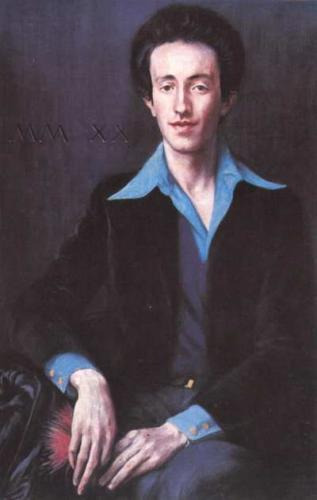
1952 – Mario Mieli (d.1983) was a leading figure in the Italian gay movement of the 1970s. He combined a radical theoretical perspective with a provocative public persona. His sometimes outrageous public behavior made him a controversial figure, but he was nonetheless respected as one of the movement's most important intellectuals. He's best known among English speakers for Towards a Gay Communism, a political pamphlet excerpted from his major theoretical work Homosexuality and Liberation: Elements of a Gay Critique.
Mieli was born into a large and prosperous family. He lived for the first sixteen years of his life on his family's estate near Como. Mario moved back to Milan with his family in 1968. Politically precocious, he threw himself into the student uprising of that year, beginning a long commitment to revolutionary causes.
In 1971 he moved to London as a student, where he took an active part in the London Gay Liberation Front. Though he spent intermittent time in London until 1975, in 1972 based himself in Milan where he studied at university. In April 1972, he, along with others, held the first homosexual demonstration in Italy at a Congress of Sexology in San Remo. They protested against psychiatric condemnation of homosexual conduct and the use of aversion therapy to "convert" homosexuals.
In 1972, Mieli helped found the collective Fronte Unitario Omosessuale Rivoluzionario Italiano (Italian revolutionary homosexual united front). Better known by its acronym F.U.O.R.I! (Come out!), it was Italy's first major gay-rights group. Started in Turin in 1971, F.U.O.R.I! appeared almost simultaneously in Rome, Padua, Venice and in Milan, where Mieli was an organizer.
A controversial personality, Mieli sometimes made a spectacle of himself. Once in Rome he publicly ate his own excrement and that of a dog. While some may have found this behavior outrageous or frightening, others knew him as a gentle person who enjoyed cross-dressing, capable of being very charming in private.
His doctoral thesis was published as Elementi di critica omosessuale. An English translation of the book was made by David Fernbach as Homosexuality and Liberation: Elements of a Gay Critique. The translation's last chapter - "Towards a Gay Communism" - was excerpted as a political pamphlet and became Mieli's most widely known work among English speakers.
By 1981, Mieli became increasingly pessimistic about his cause. In 1983, he told friends about a forthcoming book titled Il risveglio dei Faraoni (The Awakening of the Pharaohs). It was to be an autobiographical novel, set in Egypt featuring a resurrected Jesus. But in early March, he decided to stop publication of the book, writing in a letter to a friend that the book might inspire someone to "have his hide". In another letter dated March 11, he wrote "My book will not be published by my free choice". Mario Mieli killed himself the following day, on March 12, 1983. He died at age 30 from asphyxiation by inhaling gas in his Milan apartment. It seems that Mieli's suicide stemmed from adverse reaction he expected from the book's publication. Although a pirated edition was later published, his family brought legal action and had all copies destroyed. Only in 1994 was Il risveglio dei Faraoni published legally.


1953 – Bill Yosses was born on this date and was, from January 2007 until June of 2014, the White House Executive Pastry Chef. Yosses was the successor to Thaddeus DuBois who left the same position in 2006. He served as a White House Holiday Pastry Chef for the 2006 holiday season. He was hired to the position by First Lady Laura Bush.
His most recent project has been to assist in the opening of Paul Newman's Dressing Room in Westport, Connecticut–a restaurant using locally grown, artisanal and organic food sources. Other Executive Pastry Chef experience includes Joseph's Citarella in New York City; planning, designing and opening the pastry department of Bouley Restaurant and Bakery and operating the pastry department of the Tavern on the Green Restaurant in New York City. Mr. Yosses was also Pastry Chef at Montrachet Restaurant in New York City. He is the coauthor of the book Desserts for Dummies.
Yosses served apprenticeships in France, and also worked under Chefs Daniel Boulud and then Sous Chef Thomas Keller at Polo Restaurant in New York City. He earned his A.A.S. degree at the New York City College of Technology in Hotel Management, a Master of Arts at Rutgers University in French Language and Literature and a Bachelor of Arts at the University of Toledo in French Language.
President Barack Obama says of Yosses, "Whatever pie you like, he will make it and it will be the best pie you have ever eaten." Obama nicknamed Yosses "the Crust Master."
In March 2014, Yosses announced that he will resign the White House position effective June 2014, leaving the position to work on a new project focusing on "food literacy" by teaching young children and adults about eating better.
Mr. Yosses, 60, said he was also moving to New York to be with his husband, Charlie Jandusay Fabella Jr., a teacher. The two married in Washington in 2011, but "for the eleven years my husband and I have known each other, we have lived in different cities," Mr. Yosses said.

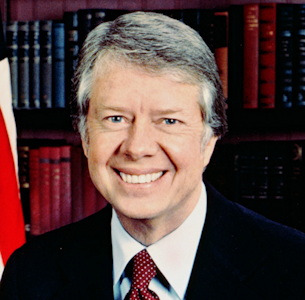
1976 – Candidate Jimmy Carter announces that if elected he will support and sign a federal civil rights bill outlawing discrimination against gays and lesbians.


1996 – Hungary legalized same-sex civil unions, becoming the first ex- communist country and the 5th country worldwide to do so. The Parliament voted 207-73 in favor of the Bill.


1994 – (Thomas Robert) Tom Daley is an English diver and television personality. Daley specialises in the 10 metre platform event and was the 2009 FINA World Champion in the individual event at the age of 15. He started diving at the age of seven and is a member of Plymouth Diving Club. He has made an impact in national and international competitions from age 9. He represented Great Britain at the 2008 Summer Olympics where he was Britain's youngest competitor, the youngest competitor of any nationality outside the sport of swimming, and the youngest to participate in a final. In 2009, Daley reached a career best ranking of number one in the FINA World Diving Rankings for the ten-metre platform.
He won two gold medals for England at the 2010 Commonwealth Games, in the 10 metre synchro diving (with Max Brick) and the 10 m Individual Platform competition, and won the bronze medal for Great Britain in the individual competition at the 2012 Summer Olympic Games.
After his success at the 2012 Olympic Games and a summer of great sporting interest amongst the public in the UK, television network ITV approached Daley to have a role in their new celebrity diving reality TV show Splash!. Daley made his debut in the show's premiere on 5 January 2013 as a mentor to the celebrity competitors taking part.
On 2 December 2013, Daley released a YouTube video announcing that he had been in a relationship with a man since early that year. He said: "I've never been happier." Daley said that it had been a tough decision to speak out about his private life. He said: "I'd never felt the feeling of love, it happened so quickly, I was completely overwhelmed by it to the point I can't get him out of my head all the time." His partner is American film screenwriter, director and producer Dustin Lance Black. They live together in London.
In 2014, Daley was number 3 on the World Pride Power list. Daley has made some conflicting statements in regards to his sexual orientation. After his YouTube video appearance he stated, "I am a gay man now". But later, when asked by The Guardian, in a July 2015 interview, if he was bisexual, Daley said: "I don't put a particular label on any of it because right now I’m in a relationship with a guy, but I still have sexual feelings towards girls." When asked about his coming to terms with his same-sex attraction and his relationship with Black, he said that while he has always been attracted to guys, and that "it has always been in the back of my head... I’d never had feelings for a person along those lines. I’d been in relationships with girls where I’d had sexual feelings, but it became so much more intense when I met Lance."
On 1 October 2015, it was announced in The Times that Daley and Black were engaged. The announcement, in the Births, Marriages and Deaths section read: "The engagement is announced between Tom, son of Robert and Debra Daley of Plymouth, and Lance, son of Jeff Bisch of Philadelphia and Anne Bisch of Lake Providence." The couple married in May of 2017.


2013 – Nepal: Cason Crane becomes the first openly gay man to summit Mt. Everest. He does it as part of his Rainbow Summit Project to raise awareness for the Trevor Project. In 2013, he became the first gay mountaineer to scale the Seven Summits.


16 notes
·
View notes
Text
The Wannsee Conference

These are some facts and curiosities about The Wannsee Conference:
On January 20, 1942, fifteen top officials of the Nazi Party and the German government gathered in a villa in the Berlin suburb of Wannsee to discuss the execution of what was called the "Final Solution to the Jewish Question."
The men gathered at Wannsee never questioned whether the plan should be implemented or not, but worked directly on identifying the most suitable systems to put it into practice.
Despite the various euphemisms used in the meeting protocols, the purpose of the Wannsee Conference was always clear to its participants: to coordinate the actions that would lead to the complete elimination of all the Jews of Europe.
The meeting took place on the scheduled day in the offices of the Rsha, Am Großen Wannsee, n. 56/58, with the following speakers:
Dr. Alfred Meyer, Gauleiter, State Secretary and Deputy Minister.
Dr. Georg Leibbrandt, director of the political department at the Ministry for the Occupied Territories in the East.
Dr. Wilhelm Stuckart, State Secretary for the Reich Interior Ministry.
Erich Neumann, Secretary of State, plenipotentiary for the four-year plan.
Dr. Roland Freisler, State Secretary at the Reich Ministry of Justice.
Dr. Josef Bühler, State Secretary of the General Government.
Martin Luther, undersecretary (Unterstaatssekretär) of the Foreign Ministry.
SS-Oberf��hrer [Dr.] Gerhard Klopfer, permanent secretary of the party chancellery.
Friedrich Wilhelm Kritzinger, permanent secretary of the Reich Chancellery.
SS-Gruppenführer Otto Hofmann, head of the Central Office for Race and Colonies (RuSHA).
SS-Gruppenführer Heinrich Müller, commander of the Gestapo.
SS-Obersturmbannführer Adolf Eichmann, head of department IV B-4 of the RuSHA, secretary of the conference.
SS-Oberführer Dr. Karl Eberhard Schöngarth, commander of the SiPo and the SD (BdS) in the General Government.
SS-Sturmbannführer Dr. Rudolf Lange, commander of the SD (KdS) in Latvia, representative of the SiPo and the SD (BdS) in the Reichskommissariat Ostland.
SS-Obergruppenführer Reinhard Heydrich, director of the Rsha and Reichsprotektor of Bohemia and Moravia.
Sources:
United States Holocaust Memorial Museum
Wikipedia: The Wansee Conference
I DON'T SUPPORT NAZISM,FASCISM OR ZIONISM IN ANY WAY, THIS IS AN EDUCATIONAL POST
#reichblr#ww2 germany#ww2 history#studyblr#austrian painter#the ss#reinhard heydrich#wansee conference#adolf eichmann
12 notes
·
View notes
Text

Berlin 2017. King Friedrich Wilhelm IV still rides his horse on Museum Island as the tourists crowd around.
17 notes
·
View notes
Text

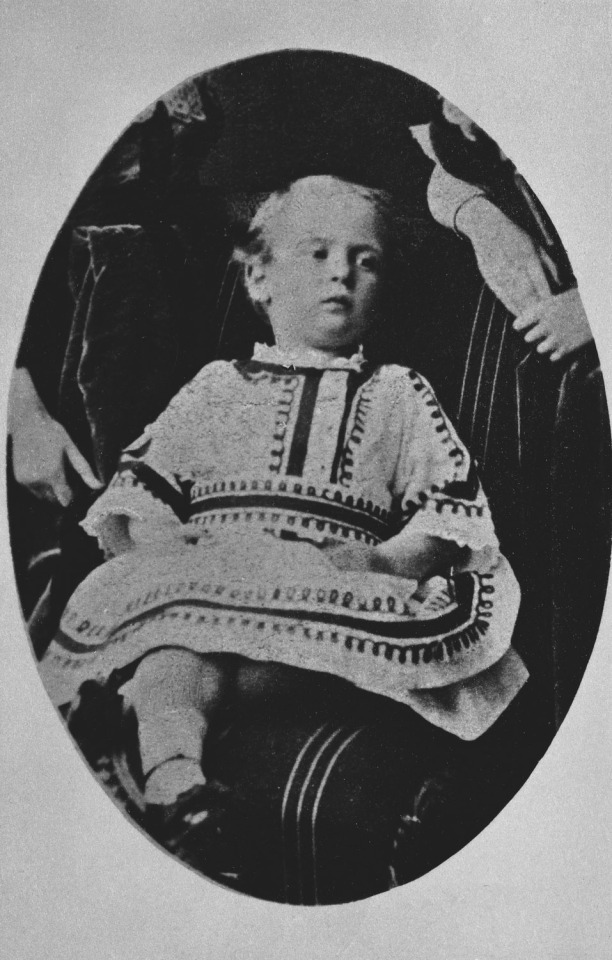
Happy 153rd Birthday to Prince Friedrich “Frittie” of Hesse and By Rhine, October 7th 1870 ✨🖤
Prince Friedrich Wilhelm of Hesse and By Rhine was born on October 7th 1870 in Darmstadt, Hesse. He was the 5th child and 2nd son of Grand Duke Louis IV of Hesse and Princess Alice of Great Britain and Ireland. He was the brother of Tsarina Alexandra Feodorovna and Grand Duchess Elisabeth Feodorovna.
He was a very lively baby and loved playing with his siblings, especially his brother Ernst Louis who he was especially close with. When he was around 1 year old he was diagnosed with Hemophilia because of a fall. Hemophilia is a genetic blood disorder that doesn’t allow the blood to clot which means that any bump or bruise could cause a fatal hemorrhage.
When he was almost 3 years old in 1873 he was playing with his brother Ernie and his mother Alice in her bedroom. Ernie ran into the adjoining room and looked out of the window to wave to Frittie, and Alice went to fetch him to bring him back into the room. Unsupervised Frittie looked out of the open window to try to find his brother which resulted in him falling 20 feet. The fall turned out to be fatal and he died of a brain hemorrhage. He would have survived the fall if not for his Hemophilia.
Fly high Frittie ✨🕊️❤️🩹
#❤️🩹#Poor bby#frittie#prince friedrich of hesse#prince Frittie of hesse#friedrich of hesse#Frittie of hesse#happy birthday#october 7#hessian royal family#hesse
14 notes
·
View notes
Note
Why is so little known about Elizabeth Ludovika? She was Queen of Prussia yet her Wikipedia has barely anything! Very few portraits and pictures too. She was Queen Consort for 21 years and yet it's as if she barely existed. More is known about her sisters than about her, which is quite odd. Do you perhaps have more sources about her? Was she a prominent figure in the lives of the people you usually post about? Thank you!
Hello! I honestly wonder the same, it's so odd how little info seems to be available about her. The only sources I know of are the works of Dorothea Minkels, in German: her biography "Elisabeth von Preussen: Königin in der Zeit des AusMÄRZens", published in 2008, and "Briefwechsel des Königspaares", a three-volumes compilation of letters between Elisabeth and her husband, King Friedrich Wilhelm IV, published between 2014-2020. I haven't read them, so I don't know if they are good.
She remained in close contact with all of her sisters for her whole life. I know of Elisabeth (always called "Elise" by her family) mediating in their favor at least once: when Franz Josef wanted to marry Princess Anna of Prussia in 1852, Elisabeth's niece by marriage. Archduchess Sophie wrote to her sister asking her to use her influence to try to get Anna's hand for her son (the princess was already engaged to someone else), and while she ultimately failed and the emperor had to look for a bride somewhere else, it does show how Elise could sometimes intercede for her family.
Sorry that I couldn't tell you more!
#also queen elise was the godmother of empress elisabeth - but i don't know of any story of them once sisi was older#queen elisabeth of prussia#asks
4 notes
·
View notes
Note
Hi! Are you able to identify the tiara the woman on the right is wearing? I think the one on the left is Augusta of Hasse-Kassel, wearing the original Cambridge Lover's Knot. This showed up on my Instagram feed and I find the shape of the unidentified tiara interesting. It reminds me of Queen Rania's Arabic tiara. Thanks in advance. (I hope tumblr doesn't eat the image)
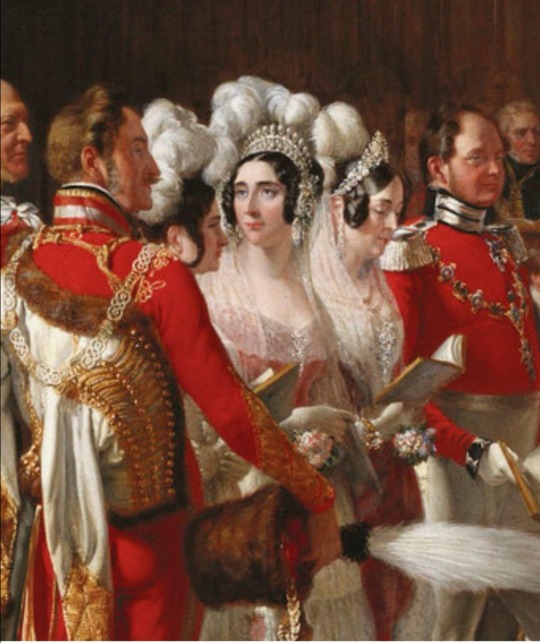
It's a close up of a painting made by George Hayter in 1842 of the christening of the then Prince of Wales later King Edward VII. The Royal Collection does not label the subjects of the painting but Princess Augusta, Duchess of Cambridge's husband, Prince Adolphus, was one of Edward's godparents so it makes sense that she's in the painting and you're right it's probably her wearing the original Cambridge Lovers Knot Tiara.

Possibilities for the woman on the right based on the other godparents or their wives
Princess Sophia of the United Kingdom
Princess Karoline Amalie, Duchess of Saxe-Gotha-Altenburg
Princess Marie, Duchess of Saxe-Coburg & Gotha
Queen Elisabeth Ludovika of Prussia - wife of King Friedrich Wilhelm IV of Prussia
Princess Maria Antonia of Saxe-Coburg & Gotha - wife of Prince Ferdinand of Saxe-Coburg & Gotha
I can't find pictures of any of them wearing a similar tiara and to be honest I'm more likely to recognize a person based on what tiara they are wearing than what they look like.

Another possibility is Queen Victoria's mother, Princess Victoria, Duchess of Kent, (left) but I've never seen a picture of her wearing a tiara similar to the one in the painting. It most reminds me of a diamond floral tiara owned by Queen Amalia of Greece (right) who was alive at the time but I don't know why she would be at the christening.
68 notes
·
View notes
Text
Round 1: Johann Sigismund vs Friedrich Wilhelm IV


Johann Sigismund (r. 1608-1619)
Converted to Calvinism, which led to Prussia being a bi-confessional state.
His marriage to Duchess Anna of Prussia officially created the state of Brandenburg-Prussia. Though said partnership, he also acquired the territory of Juelich-Kleve.
As his reign continued, his alcoholism consumed him. Schiller notes a particular incident involved him punching the ear of a prospective step son, ruining the chance for marriage. As his heath declined, he was described as halfway between life and death.
Friedrich Wilhelm IV (r.1840-1861)
A staunch romanticist, Friedrich Wilhelm was responsible for some of the most magnificent buildings in Germany. The Orangery Palace in Potsdam, the Old National Gallery in Berlin, and the renovation of the Hohenzollern Castle were all constructed during his reign.
His reign was interrupted by the terror of the People's Spring. Although the king initially conceded to the revolutionaries in Berlin, once things were settled, he swiftly crushed the uprising.
Perhaps his most famous statement is his refusal of "the crown from the gutter" offered to him by the Frankfurt Parliament. The King did initially favor a Großdeutschland solution with a Habsburg at the helm, though luckily he soon came around to the superior idea of a Prussian led union. (Note: May be too divisive - T)
We here at the Kreuzzeitung must pay a special tribute to Friedrich Wilhelm IV. After the Revolutions of 1848, he assembled a group of conservative noblemen to help combat any further revolutionary fervor. It was that group that founded this esteemed paper, so for that, we thank him.
#its clear that i have more opinions on one of these men than the other#staffer leopold#hohenzollern bracket#johann sigismund#friedrich wilhelm iv#round one
0 notes
Video
Ich Chef, du Reiter by Pascal Volk
Via Flickr:
Wie hieß das Pferd gleich noch mal?
#Europe#Germany#Berlin#Berlin Mitte#Mitte#Museumsinsel#Reiterstandbild Friedrich Wilhelms IV.#Equestrian statue of Frederick William IV#Federico Guillermo IV de Prusia#Escultura ecuestre#ARTinBW#schwarz#weiß#black#white#Black and White#schwarzweiß#S&W#B&W#bnw#blanco y negro#blanco-negro#Herbst#fall#autumn#otoño#Skulptur#sculpture#escultura#Canon EOS R3
0 notes
Photo

Reiterstandbild von Friedrich Wilhelm IV. 🐎 #berlin #pferundkunst #museumsinsel #reiterstandbild #bronzeskulptur (hier: Alte Nationalgalerie)
4 notes
·
View notes
